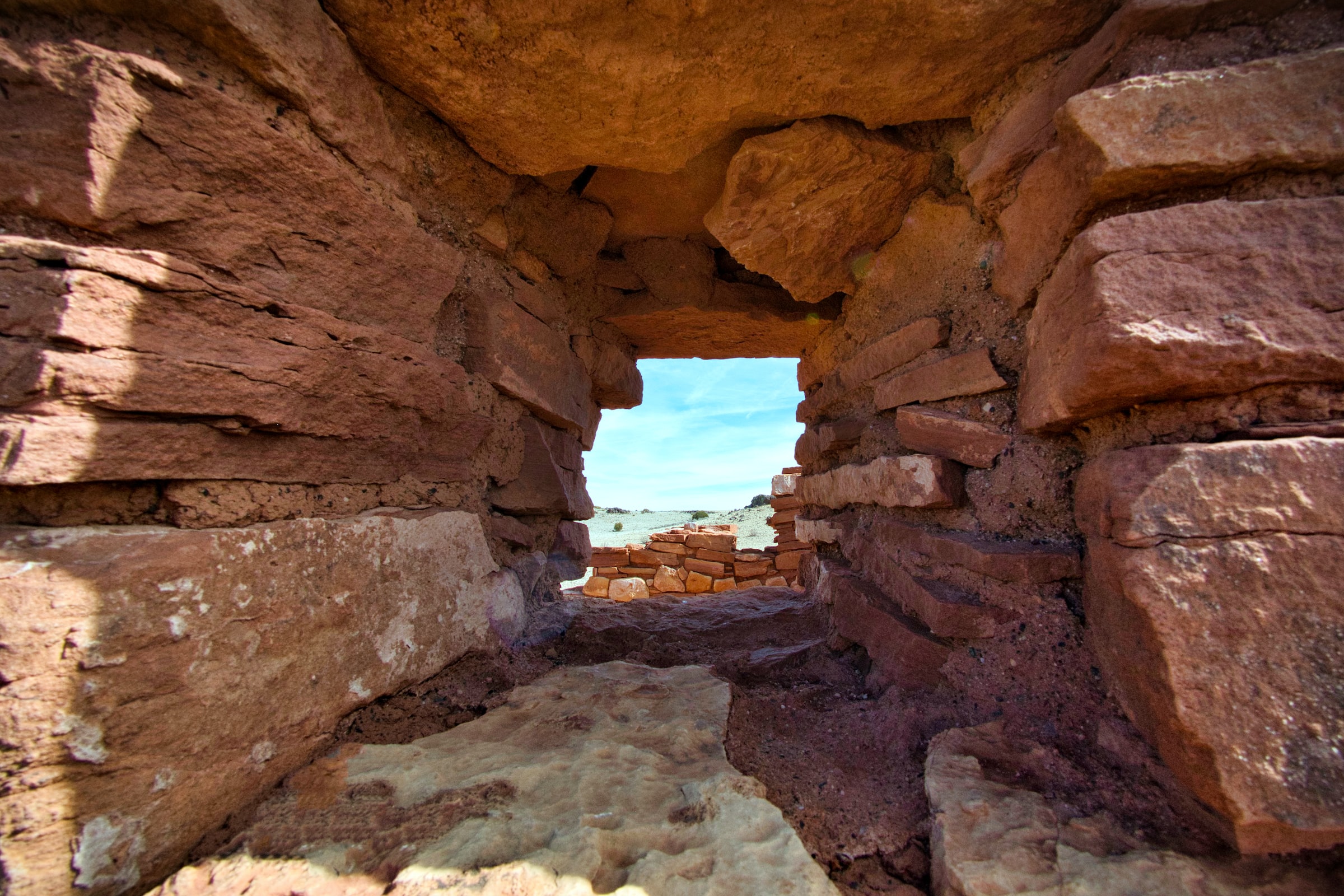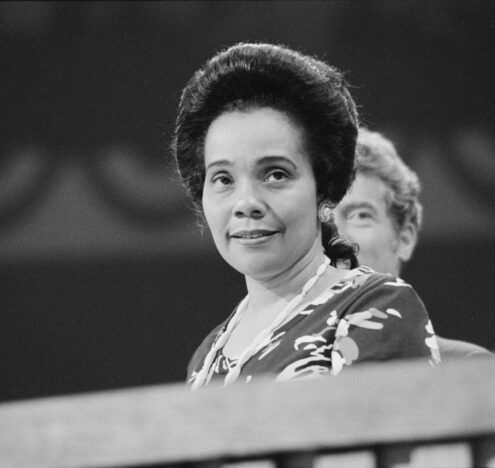Since the development of nuclear energy in the mid-20th century, Native American reservations have been subjected to thousands of tons of toxic nuclear waste, with dangerous consequences for health, the environment, and tribal sovereignty. The disproportionate concentration of nuclear waste on Native lands is not a coincidence. Instead, it reflects a targeted effort by the US government to saddle Indigenous communities with “the most hazardous material ever created by humanity or nature.”
For example, over 500 abandoned uranium mines on the Navajo Nation have poisoned residents’ drinking water and caused elevated rates of kidney failure and lung disease for generations. Members of the Yakama Nation in southeastern Washington, home to the Hanford Nuclear Site, experience high amounts of thyroid cancer and congenital disabilities. And the Western Shoshone tribe, which has been exposed to significant nuclear fallout from decades of nuclear testing on its land (known as “the most bombed nation on earth“), suffers disproportionate leukemia and heart disease rates. These are just a few examples of the devastating health impacts caused by what activists and scholars have aptly described as “radioactive colonialism.”
The disproportionate amount of nuclear waste on Native land can be primarily attributed to the many legal, economic, and regulatory power imbalances between Native American tribes and the federal government.
Taking the Land
Understanding the roots of environmental injustice in Native communities requires considering the US government’s centuries-long history of forcibly dispossessing and displacing Native people. The 1887 General Allotment Act, also known as the Dawes Act, took over 90 million acres of land away from Native American tribes, mostly to be sold to non-Natives. Subsequent legislation, including the Curtis Act, Homestead Act, and Indian Removal Act, further stripped Native Americans of their ancestral land. And in 1934, Congress passed the Indian Reorganization Act, which cemented the federal government’s authority over Native American tribes and increased tribes’ reliance on federal funds. Since then, US companies that produce hazardous waste have often capitalized on tribes’ lack of sovereignty — operating on Native reservations allows them to face minimal oversight and exempts them from state and local laws.
The federal government has intentionally singled out and targeted Native American reservations as potential repositories for high-level nuclear waste.
Courts have also restricted the ability of tribes to control their land, particularly in cases involving tribal authority over non-Native individuals. For example, in Brendale v. Confederated Tribes and Bands of Yakima Nation (1989), the Yakima Nation contested the ability of members of other tribes and non-Native individuals to develop on reservation land. The Yakima Nation argued that this was prohibited by Indian zoning law, even though it was permitted by the county’s zoning laws. The issue was whether the Yakima Nation had exclusive zoning rights on their land. The Supreme Court decided that the Yakima did not and limited tribes’ authority to regulate development on their land. Issues of jurisdiction and sovereignty on Native land are complex and contested, with many different entities (e.g., the federal government, state governments, and tribal governments) competing to exercise regulatory authority.
As a result of legal and political decisions limiting tribal sovereignty, health and safety standards on Native reservations are often less restrictive than on non-Native land. This is especially important when it comes to the nuclear industry. Years of nuclear testing and development on tribal land (as well as several resulting accidents) have led to major radioactive exposure and few consequences for its perpetrators.
Becoming Sites for Nuclear Waste Disposal
The federal government has intentionally singled out and targeted Native American reservations as potential repositories for high-level nuclear waste. After years of struggling to dispose of the United States’ rapidly-accumulating radioactive waste, Congress passed the Nuclear Waste Policy Act in 1982. This law authorized the creation of Monitored Retrievable Storage (MRS) facilities to store the nation’s nuclear waste — and Native American reservations were targeted as ideal sites for MRS facilities. A 1991 Public Citizen and the Nuclear Information & Resource Service report explains that Native land was targeted partly because the nuclear industry could “hide from environmental regulation and widespread public opposition behind the shield of tribal sovereignty.”
Several Native American tribes have sought to store nuclear waste on their land, pointing to the economic benefits of MRS facilities. The Office of the Nuclear Waste Negotiator, a short-lived federal agency tasked with finding communities willing to host MRS facilities, offered tribes thousands of dollars in grants just to consider the idea and promised million-dollar payments if tribes would go through with it. Many tribes, including the Mescalero Apache and Skull Valley Goshute, applied to the program, focusing on the financial advantages instead of the environmental risks caused by radioactive waste.
Some government officials claimed it would be preferable for Native American tribes, and not other communities, to store the nation’s nuclear waste. For example, David Leroy, the Nuclear Waste Negotiator from 1990–1993, argued (to much backlash), “Because of the Indians’ great care and regard for Nature’s resources, Indians are the logical people to care for the nuclear waste.”
Others claimed that allowing tribes to choose to apply to nuclear waste storage programs demonstrated respect for and deference to tribal sovereignty. But anti-nuclear advocates characterized this view as ignorant of the coercive history and inherent power disparities between tribes and the federal government.
Nuclear dumping on Native land can be seen as a continuation of the United States’ long history of exploiting and dispossessing Native people.
The government’s strategy (later adopted by private corporations) was widely criticized for capitalizing on and exploiting economically disadvantaged Native American communities, with the highest poverty rate out of all racial and ethnic groups in the United States. Financial incentives for nuclear waste storage on Native land have been described as “a form of economic racism akin to bribery.” In addition, establishing temporary or permanent nuclear waste repositories on Native land could make it more difficult to sue nuclear waste manufacturers for damage caused by these facilities because of the regulatory conflicts mentioned above.
Perhaps the best-known example of nuclear encroachment on Native land in recent decades is the Yucca Mountain Nuclear Waste Repository, a proposed permanent storage facility on Western Shoshone land in Nevada. The Western Shoshone people have a long history of exposure to radioactive material. For years, the US government conducted nuclear tests at the Nevada Test Site, releasing hundreds of tons of radioactive fallout onto Native land. When Yucca Mountain was chosen as a site for the nation’s principal repository of nuclear waste, the Western Shoshone were never consulted, asked for consent, or acknowledged as the original owners of the land.
Since then, the project has progressed considerably but faced numerous roadblocks, including litigation, resistance from Native activists, and opposition from the state of Nevada. Opposition to the repository has been driven by concerns about the potential health and ecological impacts — including groundwater pollution, radiation exposure caused by possible earthquakes, and severe health risks such as cancer and respiratory illness.
Resisting Nuclear Dumping on Native Land
As of 2022, the Biden administration is opposed to continuing development on Yucca Mountain, but until Congress amends the Nuclear Waste Policy Act, Yucca Mountain will continue to be the proposed site for the nation’s primary nuclear waste storage facility.
Although the Yucca Mountain project has not yet come to fruition, many examples of environmental contamination caused by nuclear waste on Native land exist. Radioactive material and other hazardous chemicals were dumped into Washington’s Columbia River for decades, contaminating the Chinook salmon, which the Yakama Nation tribe has historically relied on as a primary food source. In the Navajo Nation, radioactive material was used to build homes and schools. The land of the Ute Mountain Ute tribe, next to the only functioning uranium mill in the United States, has been found to have groundwater contaminated with high acidity levels and dangerous chemicals such as chloroform.
Nuclear dumping on Native land has been met with intense resistance for as long as it has been occurring. There are several ways in which Native leaders have attempted to fight back and achieve justice. For example, they have advocated for expanding and renewing the Radiation Exposure Compensation Act, a federal law providing compensation to workers harmed by nuclear exposure.
Tribes, sometimes supported by states, have also pursued litigation against government and private companies for the environmental and health risks caused by nuclear waste. These lawsuits have faced many procedural barriers and some have been dismissed. In contrast, others have resulted in favorable settlements, although no amount of money can thoroughly remedy the harm inflicted by nuclear waste. Other advocacy efforts include pressuring the government to clean up nuclear waste sites and urging more research on the health impacts of nuclear waste.
Advocates have described nuclear waste on Native American reservations as a textbook example of environmental injustice: the disproportionate exposure of marginalized communities to environmental harm. Nuclear dumping on Native land can be seen as a continuation of the United States’ long history of exploiting and dispossessing Native people. Addressing it will require a comprehensive approach that centers the voices and experiences of Native communities.
This piece is published in collaboration with Outrider Foundation, a nonprofit media group that publishes commentary on security issues, public policy, and social justice.




















